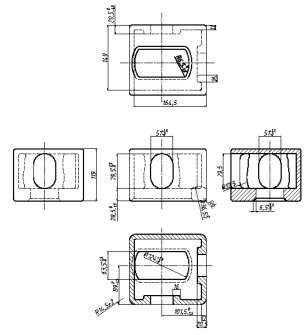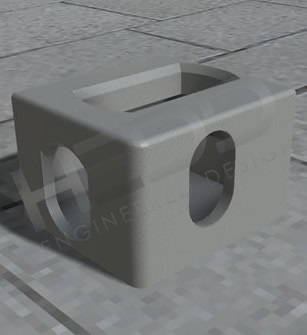 Shipping Container corner castings are the corners of a shipping container. Corner castings are the structural element of a shipping container allowing it to be connected to other containers both horizontally and vertically as well as being connected to transport modes including ship, rail and road. When connecting containers together the corner casting provides the structural connection point required for the many different types of shipping container connectors such as shipping container double ended twist locks, shipping container weldable twist locks and shipping container bridge clamps.
Shipping Container corner castings are the corners of a shipping container. Corner castings are the structural element of a shipping container allowing it to be connected to other containers both horizontally and vertically as well as being connected to transport modes including ship, rail and road. When connecting containers together the corner casting provides the structural connection point required for the many different types of shipping container connectors such as shipping container double ended twist locks, shipping container weldable twist locks and shipping container bridge clamps.
Double ended shipping container twist locks allow two corner castings to be connected together vertically, they are available in two basic types, manual twist locks and semi-automatic twist locks. Manual twist locks are the most widely used units having a breaking load of 500 kN and are suitable for all applications, they are primarily used in a cargo ship application. Semi automatic twist locks are primarily used in the rail industry where double stacking of containers on a rail truck produces higher loads. They are self locking but must be manually released.
 Weldable twist locks are designed to be installed on to a structure so a shipping container can be connected to it, such as a barge, truck, trolley or factory floor. They can be welded to casters to allow a shipping container to be fitted with wheel or to a bolt plate to allow a shipping container to be bolted to a concrete slab. Weldable twist locks are the best way of connecting a shipping container to another structure while still allowing the container to be removable at a later date.
Weldable twist locks are designed to be installed on to a structure so a shipping container can be connected to it, such as a barge, truck, trolley or factory floor. They can be welded to casters to allow a shipping container to be fitted with wheel or to a bolt plate to allow a shipping container to be bolted to a concrete slab. Weldable twist locks are the best way of connecting a shipping container to another structure while still allowing the container to be removable at a later date.
Bridge clamps are designed to connect a shipping container together horizontally. Primarily designed to connect containers together on a cargo ship, they are also perfect for static installations that require shipping containers to be secured such as cyclonic wind areas.
Shipping container corners are an essential part of the shipping industry, they allow shipping containers to not only be stacked but also allow them to be picked up and moved as required.